With no intention of necro-tourism, we are going to take a journey through the illustrious figures buried in Seville Cathedral. That the mortal remains of a person rest inside a place of faith was and has always been a constant in almost all cultures. So it is not at all strange that in the subsoil of the Cathedral of Seville there are buried prominent figures in the history of Spain.
You may not know our general article about Seville Cathedral or the post about curiosities of the cathedral. We recommend you to read it, although if you are going to visit the Sevillian temple you should download the guide with expanded content. We offer it in pdf and for free when you subscribe to the Andalucía 360 newsletter.
Downloadable guide only available in Spanish
What you will find here
BEATRIZ DE SUABIA (1205-1235)
Our tour of the illustrious figures buried in Seville Cathedral begins with Beatrice of Swabia. She was the queen consort of Castilla and wife of Ferdinand III. Her real name was Isabella, but on her arrival in Castilla she changed her name to Beatriz. She was a highly cultured woman with a passion for knowledge. This same passion was passed on to her son Alfonso X the Wise. There is a statue of her in Burgos Cathedral and Alfonso X dedicated some verses to her in his Cantigas.
He was a descendant of two great medieval empires: Byzantium (on his mother’s side) and the Holy Roman Empire (on his father’s side). She died young, aged only 37, after giving birth to eight children. Although she was first buried in the monastery of Las Huelgas in Burgos, her son Alfonso moved her body to the Cathedral of Seville, her tomb being one of the most beautiful in the Royal Chapel.
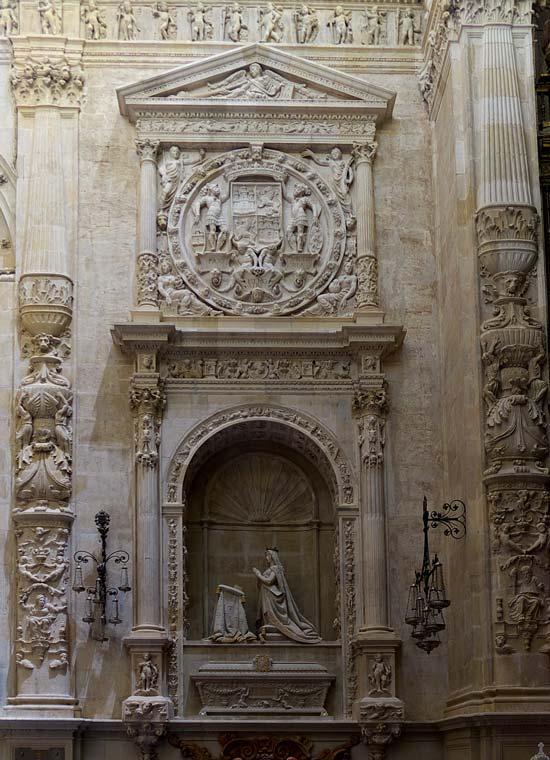
Sepulchre of Beatriz de Suabia in the Royal Chapel of the Cathedral of Seville (José Luis Filipo Cabana, Wikipedia, CC BY 3.0).
FERNANDO III DE CASTILLA (1199-1252)
Fernando III, husband of Beatrice of Swabia and nicknamed “like the Saint”, was the Christian king who took Seville from the hand of the Almohads. His body rests incorrupt in an exceptional urn. It is a silver piece that covers another one with glass walls and doors that allow you to see inside, although it is not always visible. One of the days when it can be seen is 30 May each year, the day of the monarch’s death.
This unique tomb is called “Urna de San Fernando” and is located in the Royal Chapel of Seville Cathedral. It is located at the foot of the Virgen de los Reyes, the image that presides over the chapel and which helped the king to conquer the city of Seville.
Fernando III was the son of King Alfonso IX of León and Queen Berenguela of Castilla. His son was the famed Alfonso X, who is considered to have written the epitaphs in Latin, Castilian, Arabic and Hebrew that can be read on the urn.
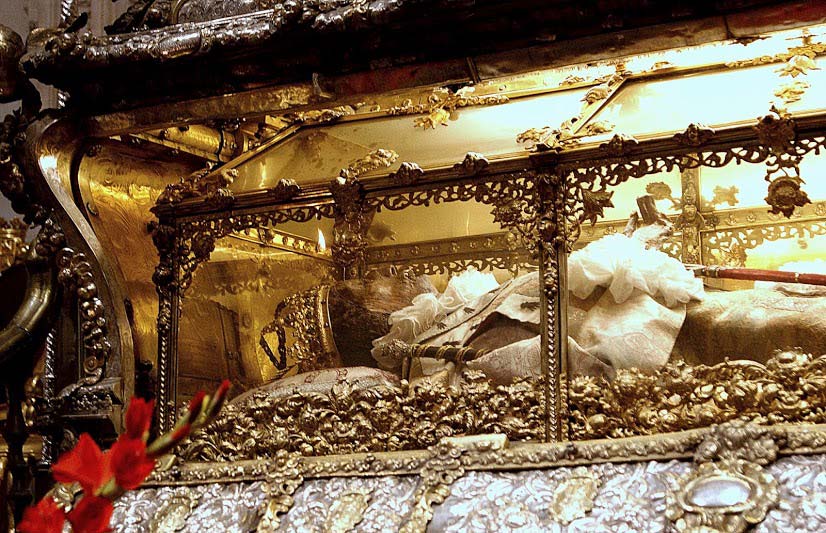
Incorrupt corpse of Ferdinand III of Castilla (Pepe Becerra, Wikipedia, CC BY-SA 4.0).
ALFONSO X (1221-1284)
And now we come to the son of the previous two. Alfonso X is one of the most laureate monarchs in the history of Spain. This Castilian king is well known for his battles against the Muslims, but we like to talk more about his intellectual work. He was the mecenas of an important number of scientific, literary, historical and legal works. He was personally involved in the execution of the works, in which he even participated in the drafting. Astronomy was one of his passions, and in fact there is now a crater on the moon that bears his name.
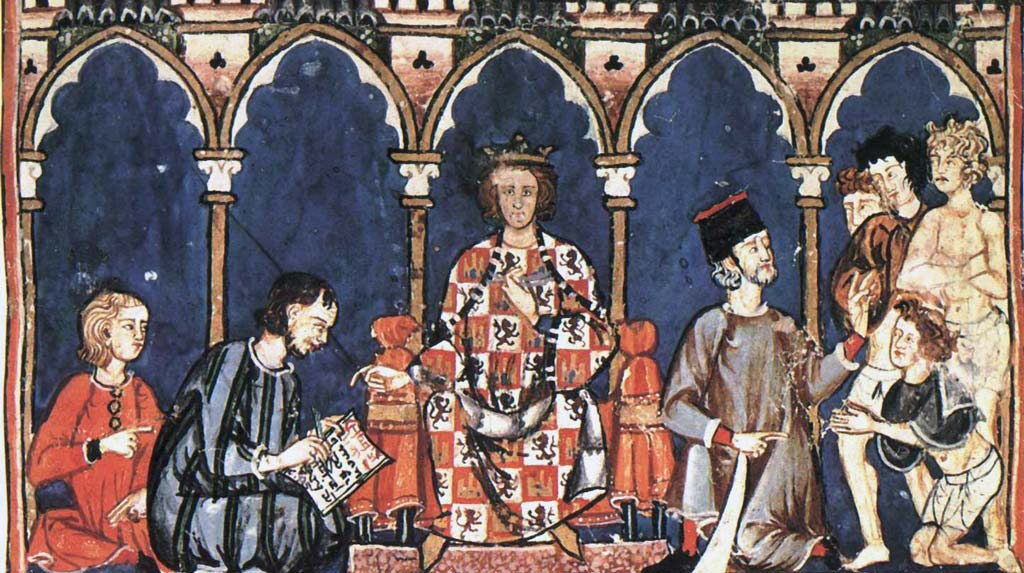
Alfonso X the Wise in The Book of Games.
He is also known for bringing together the knowledge of the three cultures in the Iberian Peninsula: Hebrew, Muslim and Christian. Many of his works condense the knowledge of these cultures, as he brought together a team of diverse people who were dedicated to the translation and copying of manuscripts and ancient texts, the famous Toledo School of Translators.
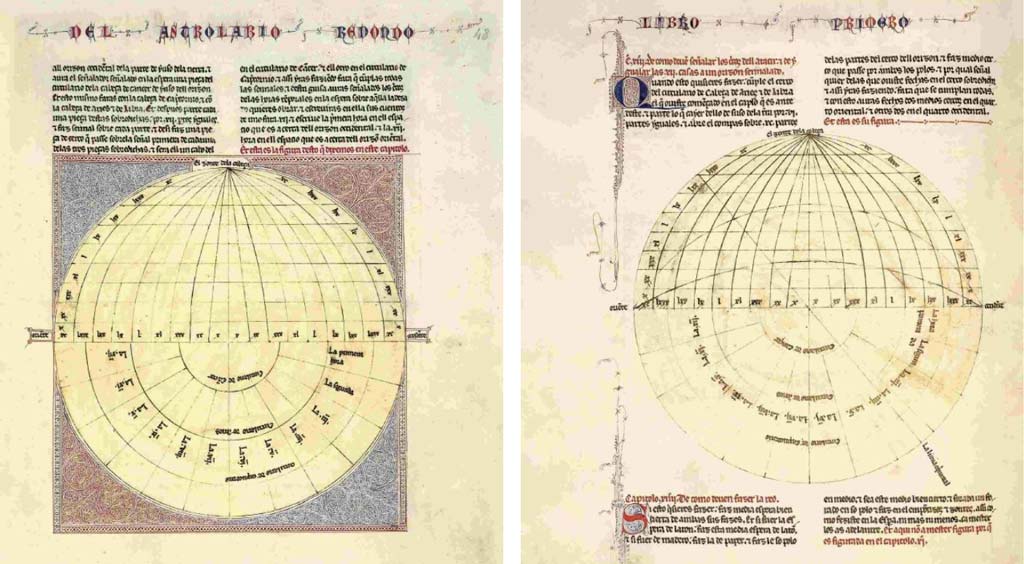
Books of the Knowledge of Astronomy [manuscript] Page 48. From Alfonso X.
CRISTÓBAL COLÓN (1451-1506)
He is perhaps one of the most controversial and disputed people in historiography in different parts of the world. Whether he was Spanish or not, whether he was the first to reach America or not…. Without entering into the debate, Colón was a great navigator who convinced the Catholic Monarchs to embark on an adventure that would change the course of history between the American and European continents.
The story of his mortal remains could well have been included in the curiosities post. Since his death in 1506, the body of Cristóbal Colón travelled from Valladolid to Seville, then crossed the pond to Santo Domingo and later to Havana. Finally, and as a result of Cuba’s independence, in 1899 the mortal remains returned to Seville. Visiting the tomb of Colón is a must on your visit to Seville.
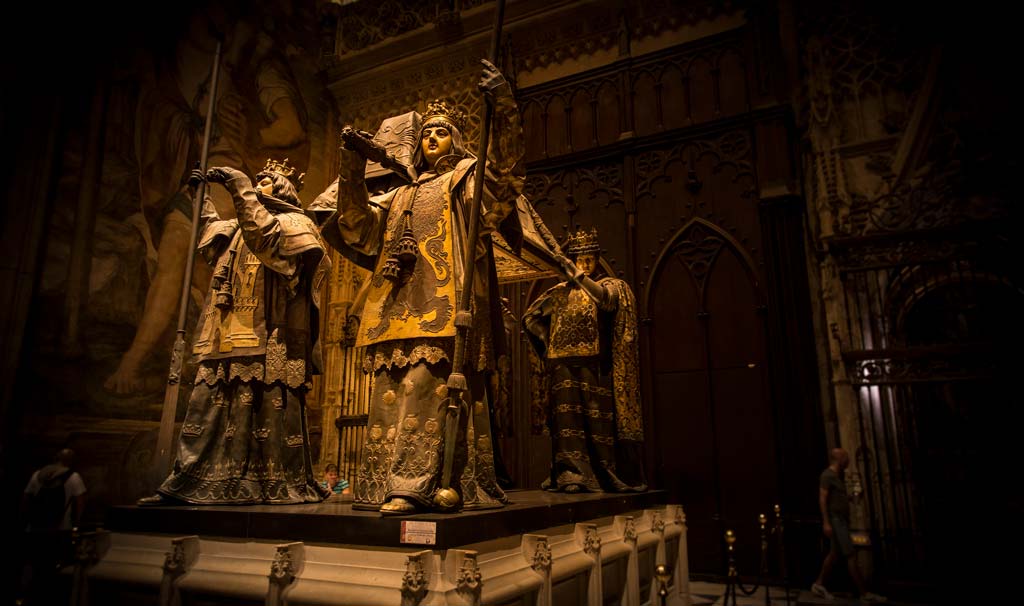
Tomb of Christopher Columbus in the Cathedral of Seville.
In fact the present monument to Colón in the Cathedral of Seville is quite recent, it was finished in 1904, when the remains of the navigator were moved definitively. His coffin is supported by four heralds representing the four kingdoms of Spain (Castilla, León, Aragón and Navarra).
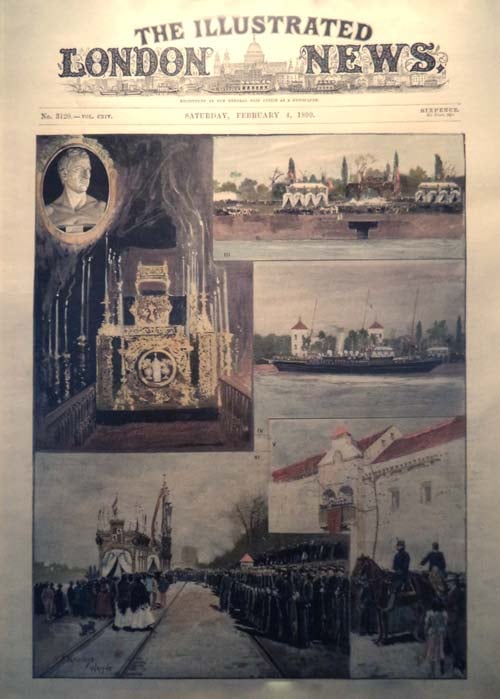
Transfer of Columbus’ remains to Seville in 1899 in a London newspaper.
HERNANDO COLÓN (1488-1539)
The son of the navigator Cristobal Colón, Hernando Colón, is also buried in the choir of the Cathedral of Seville. We already mentioned this character when we talked about the Colombina Library and we mention him again here, as his remains rest in the Cathedral of Seville.
Even though he was an illegitimate son, his father recognised him and Hernando became a page to Prince Juan of Aragon. With him he received a courtly and intellectual education that served as the basis for his future. Cosmography and books were his main passion and what he is remembered for today. But this humanist character also devoted himself to mathematics, history, etc.
However, he also had some adventures, as he travelled to America on two occasions. One with his father in 1502, when he was only 14 years old, and another with his brother Diego, who had been appointed governor of Hispaniola.
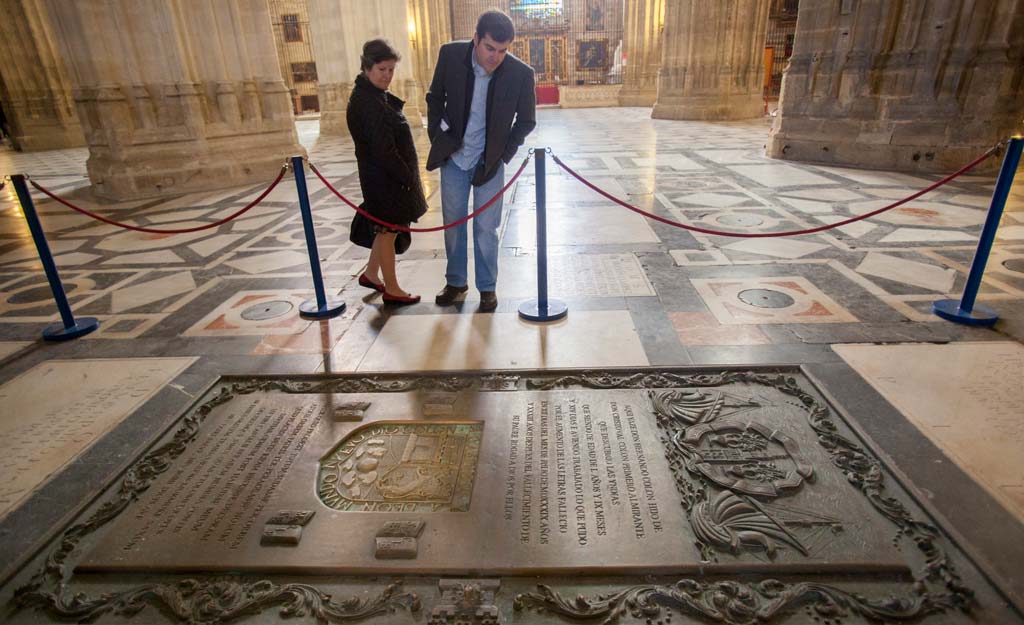
Tombstone of Hernando de Colón, without doubt an illustrious personage buried in the Cathedral of Seville (© Turismo Andaluz).
DOÑA GUIOMAR MANUEL (14th century-1426)
Of all the people discussed here, it is perhaps Guiomar Manuel who has worked most for the betterment of Seville and the people of Seville. Doña Guiomar had a large fortune which she spent on works of various kinds. The best known are those of reforming the prison and providing it with wateror that of donating a large sum of money for the construction of the cathedral, which she never saw. Doña Guiomar died at the beginning of the 15th century, before the construction of the cathedral, and on her death she was buried in the primitive cathedral of Santa María in Seville (the Christianised mosque that has now disappeared).
But focusing on her work, we will tell you that she paid for the brick flooring of some of the streets and squares of Seville when the roads were still made of earth. He also donated his salt mines in Utrera and Sanlúcar de Barrameda to the city. She was a devout woman with a strong sense of charity, which is why she also participated in the construction of several convents in Seville.
Today only a small bronze tombstone commemorates this woman, as in the 18th century the renovation of the pavement covered a large part of the original tombstone.
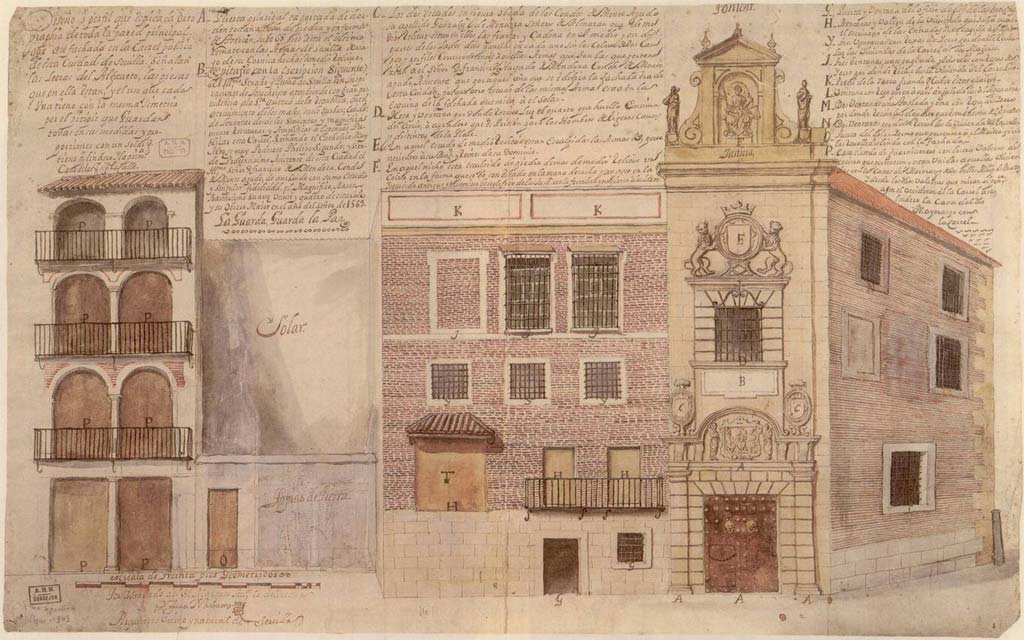
Design of the public jail of Seville. Madrid. Archivo Histórico Nacional.
PEDRO I (1334-1369)
The history of Pedro I of Castilla is the story of a constant struggle. His entire reign was sprinkled with rebellions and battles against nobles and other aspirants to the crown. His is a story of love and hate, so much so that he may be known as Pedro I “the Cruel” or “the Just”, depending on which side dubbed him. In fact most of his fights were against the Christians themselves.
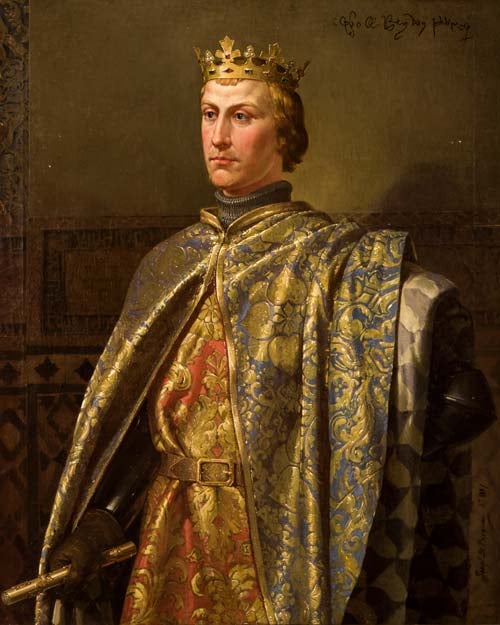
Pedro I Portrait in the Seville Town Hall (Joaquín Domínguez Bécquer, from 1857).
If you want to know more about the battles that King Pedro held within his own kingdom do not hesitate to contact us. We will design an exclusive themed tour of Seville. Here we would like to tell you one of the most unique stories of this Castilian monarch. Pedro I of Castilla maintained an intense friendship with Muhammad V of Granada. Both shared a history of family usurpations and both had an admiration for art. As a result, they helped each other in military campaigns and shared artists and craftsmen for the construction of their palaces. In Seville, Pedro I remodelled the Reales Alcázares with such beautiful Mudejar-style spaces as the Patio de las Doncellas (Courtyard of the Maidens). At almost the same time, Muhammad V built the Palace of the Lions, with spaces as unique in Nasrid art as the Hall of the Kings.
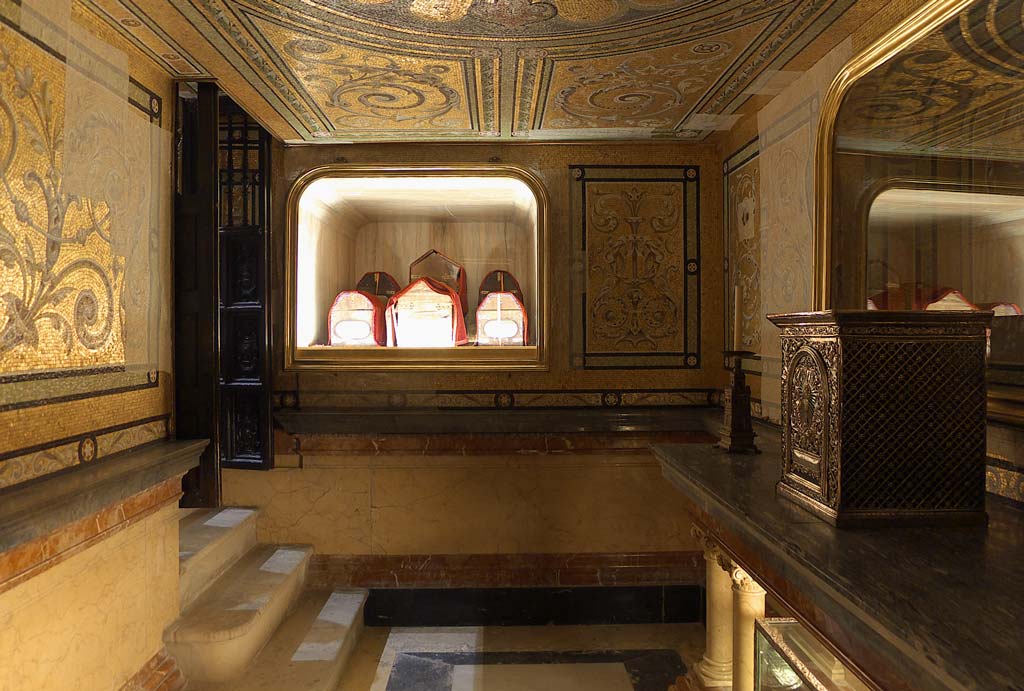
Crypt of the Royal Chapel (José Luis Filpo Cabana, Wikipedia, CC BY 3. 0).
MARIA DE PADILLA (1334-1361)
The story of this Castilian noblewoman is surprising to say the least. María de Padilla was lady of Huelva, mother of three children, died young and was queen, but the latter after her death. Some chronicles speak of her as a pious woman of “good understanding”. And tradition has it that she interceded on behalf of some of the condemned. Little is known of her before her love affair with Don Pedro I of Castilla.
What is certain is that when she was only 18 years old she began a relationship with Pedro I, but the monarch was already married twice, so their marriage could not be formalised. However, the love between the two was so strong that, once Maria had died, Pedro I did everything he could to ensure that she was legitimately considered his wife. And he pushed so hard that María de Padilla became the only Spanish woman to be crowned queen after his death. It was then that her mortal remains were transferred to Seville Cathedral.
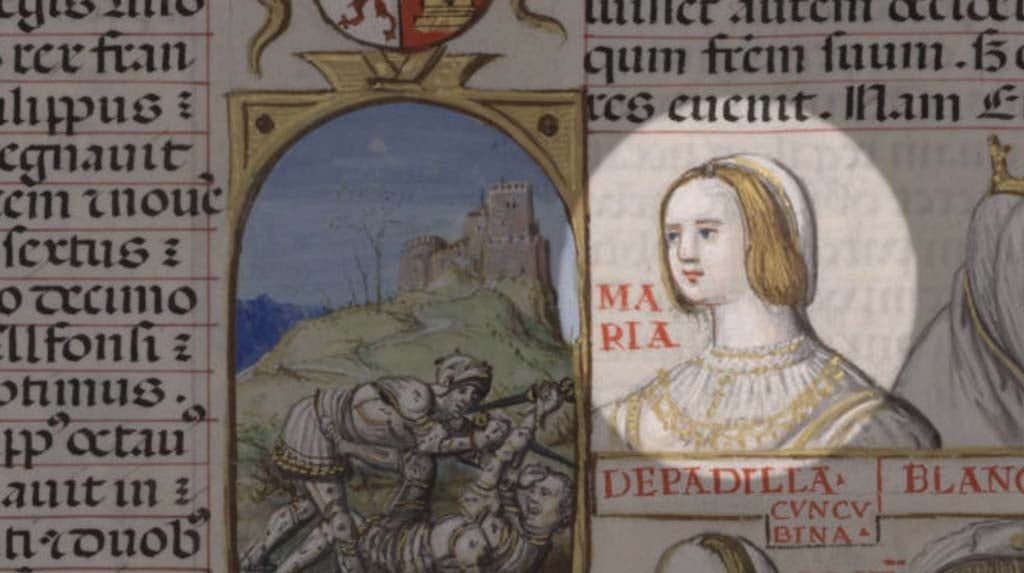
Drawing of María de Padilla in “Liber genealogiae regum Hispanie” [Manuscript] (page 88, National Library of Spain, CC BY-SA 4.0)
SEPULCHRE OF DIEGO HURTADO DE MENDOZA (1444-1502)
As youcan imagine, the figures buried in Seville Cathedral include many ecclesiastical officials. And we are not going to stop at all of them, but we do want to stop at the tomb of Diego Hurtado de Mendoza y Quiñones for its spectacular sculptural relevance. The work is by Domenico Fancelli, an Italian artist, and is made in an exquisite Renaissance style with Carrara marble. In other words, the marble was brought from Italy for the occasion. This was commonplace throughout the Renaissance and is another example of the power and fortune amassed by one of the wealthiest families in the emerging Spain. Diego was bishop of Palencia and later archbishop of Seville.
Although they belong to the same noble house, this Diego has little to do with the other “Diego Hurtado de Mendoza” that are out there, among them the poet and diplomat from Granada.
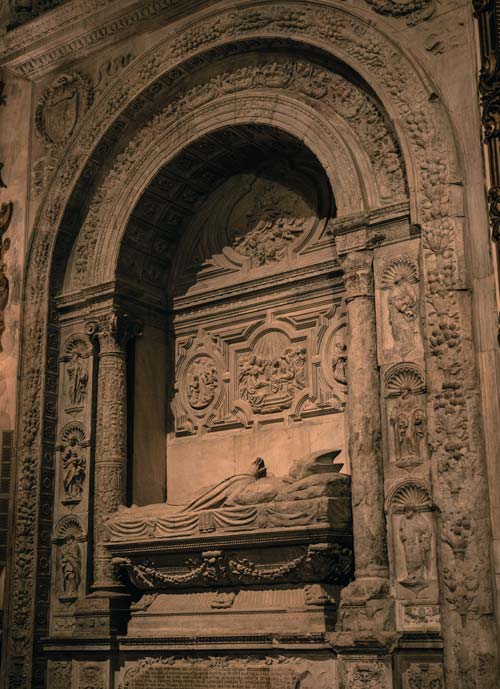
Sepulchre of Diego Hurtado de Mendoza (Author: Alex Quezada).
SEPULCHRE OF CARDENAL JUAN DE CERVANTES BOCANEGRA (1382-1453)
To end this tour of the illustrious figures buried in Seville Cathedral we have left Cardinal Cervantes. Like the previous one, Juan de Cervantes rests in a sculptural work of singular beauty. The work carved in alabaster is in the chapel of San Hermenegildo in Seville Cathedral. In the photo we have placed here you can see just a detail of the cardinal’s face so that you can see the delicacy and realism of the carving.
Cervantes de Bocanegra was one of the most important figures of the medieval Catholic Church. He lived in Rome for some years and even befriended the future Pope Pius II. However, we would like to highlight his role as a patron of religious art. He built the Hospital de San Hermenegildo and ordered the purchase and execution of works of art for Seville Cathedral. On his death he did as Giomar Manuel did, donating his inheritance to the cathedral.
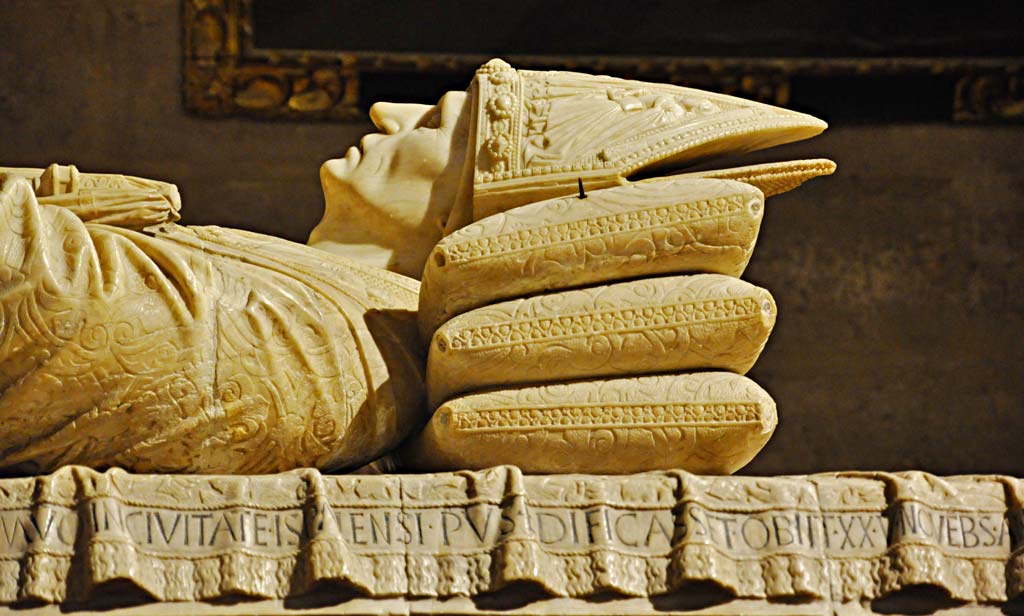
Sepulchre of the cardinal Juan de Cervantes Bocanegra (Author: Luisfpizarro).
LET’S LEARN MORE ABOUT THE ILLUSTRATED PERSONS BURIED IN THE CATHEDRAL OF SEVILLE
This is the end of our journey through the illustrious figures buried in Seville Cathedral. Of course there are many more, in fact in the 17th century there were as many as 627 epitaphs in the cathedral without counting the collective burial vaults. If you want to know more about Seville and its characters we recommend you to take a look at our private tours that are made by great connoisseurs of the history of Seville. Some of the fantastic guided tours of the Andalusian capital that are available right now.
You also have at your disposalthe guide of the Cathedral of Seville completely free of charge. You can download it in pdf, with expanded contents and consult it whenever you want.
Downloadable guide only available in Spanish
The Cathedral of Seville / What to see in Seville /
Curiosities of the Cathedral of Seville /
Sevilla with Charm

